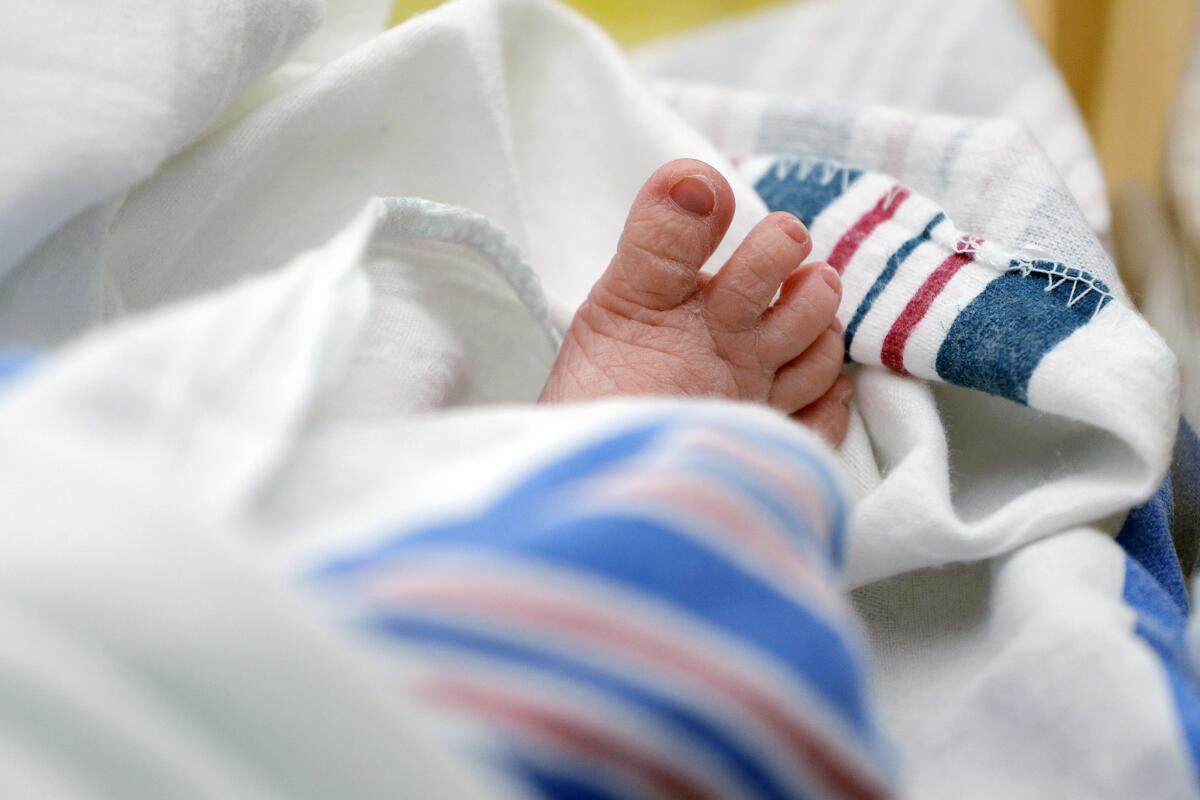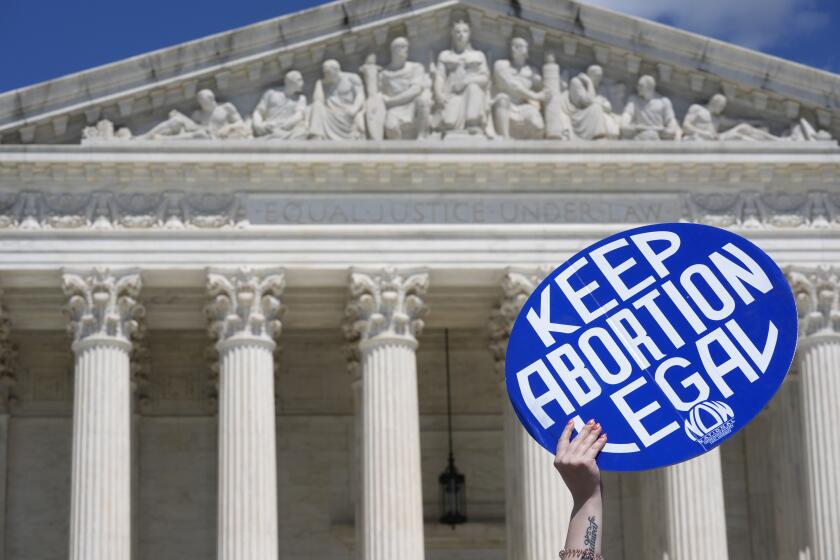Infant mortality in the U.S. worsened after Supreme Court limited abortion access

Infant deaths have increased in the United States since the Supreme Court ruling that overturned Roe vs. Wade and allowed states to make abortion illegal, researchers reported Monday.
The change became detectable three months after the June 2022 ruling with an elevated rate of infant mortality involving babies born with serious congenital anomalies, the researchers found.
By the end of 2023, there were six months when the death rate for infants with severe anatomical problems was significantly higher than in the years leading up to the high court’s decision. The researchers also identified three months when the nation’s overall infant mortality rate had increased.
However, neither of those rates fell below their historical range in the year and a half after the ruling in Dobbs vs. Jackson Women’s Health Organization.
The findings, reported Monday in the journal JAMA Pediatrics, were seen as a clear sign that the Dobbs decision has prevented some women from terminating pregnancies that otherwise would have ended in abortion.
“There’s a really straightforward mechanism here,” said Alison Gemmill, a demographer and perinatal epidemiologist at Johns Hopkins Bloomberg School of Public Health, who wasn’t involved in the study.
“Prior to these abortion bans, people had the option to terminate if the fetus was found to have a severe congenital anomaly — we’re talking about organs being outside of the body and other things that are very severe and not compatible with life,” Gemmill said. However, if women in these situations had no choice but to continue their pregnancies, “those babies would die shortly after birth,” she said.
A growing number of women say they’ve tried to end their pregnancies by taking herbs, drinking alcohol or hitting themselves in the abdomen, study finds.
Gemmill said the new findings are in line with her own research, including a study published in June that documented a nearly 13% increase in infant mortality in Texas in the wake of a 2021 state law that banned abortions after about the sixth week of pregnancy. Deaths due to congenital anomalies in particular rose by 23% while they were falling in the rest of the country, that study found.
Parvati Singh, an epidemiologist at Ohio State University who studies the effects of sudden changes in health policy, wondered whether the Dobbs decision would have similar consequences for the nation as a whole.
To find out, she and her colleague Maria Gallo, a sexual and reproductive health epidemiologist at Ohio State, dug into data on live births and infant deaths gathered by the Centers for Disease Control and Prevention. Those figures allowed them to calculate monthly infant mortality rates.
In a large population like the United States, the number of babies being born and dying each month tends to be stable, Singh said. What she and Gallo looked for were significant deviations from that stable average.
The pair started with data from January 2018 to May 2022 — the month before the Dobbs ruling — to identify “the core signal” and the natural “ups and downs around that core signal,” Singh said.
Then they used that information to estimate what the country’s monthly infant mortality rates would have been up through December 2023 if the Supreme Court hadn’t allowed states to limit or ban abortion. (According to the Guttmacher Institute, 13 states have banned abortion altogether, and eight others ban it at some point during the first 18 weeks of pregnancy.)
The next step was to compare their monthly estimates of infant mortality to the actual figures based on the CDC data. Nine times, the observed infant mortality rate was higher than the expected rate, and the difference was too large to be explained by natural variability or random chance, they found.
A study has found that the number of women charged with crimes related to their pregnancies jumped in the year after the U.S. Supreme Court ruling that cleared the way for abortion bans across the country.
Since the researchers don’t know the details about each death, they can’t say with certainty whether any particular case involved a pregnant person who was denied an abortion, Singh said. But the patterns suggest that many of them were.
For example, the increases in deaths involving infants with congenital anomalies were first seen in September and October 2022. That timing makes sense, Singh said.
The ultrasound exam that doctors use to make sure fetal organs are developing properly occurs 18 to 22 weeks into a pregnancy. If an exam produced devastating news right after the Dobbs decision but the patient wasn’t able to have an abortion, she would be at risk of a preterm birth three to four months later.
Rates became elevated again eight months after the Dobbs decision. That could reflect the cases of women who conceived right around the time of the Dobbs ruling — before they had a chance to reconsider whether to become pregnant and before they could come up with ways to work around the ruling, Singh said.
Infant mortality rates were back within the normal range a year after the ruling, which may indicate that the pool of people willing to become pregnant had changed in response to the newly restrictive landscape.
Something similar happened early on in the COVID-19 pandemic, Singh said.
“Fertility declined very rapidly,” she said. People who chose to get pregnant despite the threat posed by the new disease were less likely to give birth prematurely and their newborns were less likely to experience low birthweight.
“In other words, they were fitter pregnancies,” Singh said. “Maybe that is what is happening here.”
In Texas, maternal mortality is soaring. Blame the antiabortion movement
Altogether, Singh and Gallo tallied 247 additional infant deaths in the 1½ years after Dobbs, which amounted to a 7% increase. The vast majority of those deaths — 204 — were due to congenital anomalies, an increase of 10%, according to the study.
The fact that infant mortality never dropped below expected levels is strong evidence that the abortion ruling was the root cause of the additional deaths, Singh said.
“If our theory is correct, then there is no reason for there to be lower-than-expected infant mortality,” she said.
Gemmill said the increase in infant mortality would likely be more pronounced if the researchers had focused on changes in states with abortion restrictions instead of looking at the country as a whole.
The increases probably would be highest in places where pregnant people have to travel long distances to reach another state to access abortion, she added.










